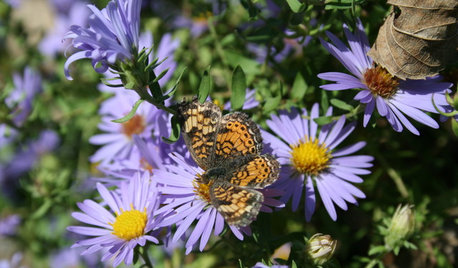* Posted by: Sam_MD z7 MD on Sat, Jul 27, 02
The question "What is native?" comes up often. Since this is a garden forum, most gardeners approach this word very casually.
Environmental plantings often have guidelines that are more strict. Restoration and reforestation work are likely to use only species historically found in that area.
There is no single way to define native that suits every purpose. If you want to know about native flora in your state you might consult your state's flora or atlas. We have a 30 year old reference for Maryland that I use almost every day. For my purposes, I am not interested in species exclusively native to other areas of the country
* Posted by: Waplummer Z5 NY on Sat, Jul 27, 02
Probably, strictly speaking, but not zealously so, to me a native plant is one which, although it may not occur in my county, occurs north east south and west of my location, i.e. it's natural range overlaps my particular latitude and longitude. I may use "native" to include plants which probably occurred here pre-glaciation, but were pushed south during the glacial periods.
* Posted by: lrobins z6b MD on Sat, Aug 3, 02
I think there's an important point to be made about the East/West vs. North/South distribution of native plants (in the continental U.S.). As you go from East to West, there are several major climate zones / ecosystems. (1) Eastern deciduous forest (from coast approximately to Mississippi River). (2) Great plains (prairie). (3) Rocky Mountains. (4) Southwestern desert. (5) West coast. On the other hand, going from North to South, there aren't such distinct zones with geographic barriers, only a gradual incrase in average summer and winter temperature (without much change in average rainfall, at least in the eastern half).
The result is, there are lots of eastern U.S. native plants that have a large North-to-South geographic range, perhaps from New England / Minnesota to Georgia / Texas. (There is likely some North-to-South genetic variation within each of these species.) But far fewer plants with a natural geographic range from East to West Coast.
If you look at field guides to trees and wildflowers (I am looking at some Audubon guides now), there are almost always separate guides for "North America - eastern range" and "North American - western range". But **not** separate guides for "northern range" and "southern range".
I conclude from this that if you live in Pennsylvania, your garden has a more southern microclimate (maybe next to a south-facing wall with little shade), and you have some eastern U.S. native plants that don't grow north of Virginia according to the official range maps, then it's reasonable to argue that these can be considered part of the "native habitat" in your microclimate.
On the other hand, if you live in California, and grow mainly eastern U.S. plants whose natural range ends somewhere around the Mississippi River, then it's "stretching" to claim that you have a native plant garden.
(To see that these distinctions aren't just arbitrary, it's important to look at the plants as part of a community of living species: insects, birds, mammals, soil organisms, with each species having its own native range.)
* Posted by: Linda_8B on Sat, Aug 3, 02
In a general sense, any plant originally found growing in my state during the time before people (and their livestock) started actively importing plants..might be called natives. But you have to have common sense. A swamp plant isn't very appropriate in a very arid environment. An acid-loving azalea isn't very appropriate in a very alkaline environment (like my property). I live in a BIG state, with lots of different environments. There are lots of natives I can grow without daily watering or application of toxic chemicals and nonorganic fertilizers. I love to explore natural area parks, roadsides, etc., in my area and that way I can also see what environments the natives require. Adding a little bit of sand to a bed for sandy soil-loving plants is not a big deal, for example. Getting together with others who garden with natives in your area really helps you, plus some usually share what seeds and plants they have.
* Posted by: NYC_Native z7a? NY on Sat, Jul 27, 02
In my garden I would like to use plants from other parts of the US. I can do this and still consider it a native-plants garden. What tempers my choices oftentimes is my soil, the relative humidity of NYC summers (mildew on leaves) and our current drought of 3 years. I help the new plants and those of the woodland variety but the others must make it on their own. .. If you type a plant's name (common or scientific) into Hortiplex (there's a link on the main page of each forum) and it has a link to "plants database" you can see a map of what states that plant is represented in. If a plant is a wetland plant there is a list of the regions and how that plant presents in wetlands (needs it or 50/50, e.g.)













Related Discussions
Ricky - what was the little native plant?
Q
Advice on plant choices
Q
Native Texas Plants
Q
different & small yard, what to plant?
Q